History of Kropyvnytskyi
Foundation of Kropyvnytskyi (St. Elisabeth Fortress)
Within and around today’s Kropyvnytskyi, a lot of archeological monuments (mounds and burials) have been found. The oldest of them confirm that people lived in this territory already in the Middle Paleolithic (about 40-100 thousand years ago). In different time periods, the Cimmerians, Scythians, Sarmatians lived here. Subsequently, they were replaced by the Turkic-speaking tribes of the Huns, Avars, Khazars, and Pechenegs, the Slavic tribe of the Uliches.
In the 16th-18th centuries, this region was controlled by the Zaporizhzhya Sich, (a proto-state of Ukrainian Cossacks). There were a number of scattered settlements and farms of the Zaporizhzhya Cossacks. People settled here at their own peril and risk, since they were on unprotected border lands. The colonization of the lands between the Dnieper and the Southern Buh (known as Dnieper Ukraine) was started by the Cossacks of the Myrhorod and Poltava regiments in the late 17th - early 18th century.
The foundation of Kropyvnytskyi is connected with the foundation of the fortress of St. Elisabeth. In 1752, in the Russian Empire, on the basis of the petition of the Serbian colonel Jovan Horvat, a decree was issued on the creation of a military-administrative unit called New Serbia on the territory of today’s Kirovohrad Oblast.
It was created for people from the Balkans of the Orthodox faith. To protect New Serbia, it was decided to build a new fortress - the fortress of St. Elisabeth. It was founded south of the territory of New Serbia on the right bank of the Inhul River. The fortress was named in honor of Saint Elisabeth - the patroness of Empress Elisabeth Petrovna (1709-1762). The garrison of the fortress was of about 3,000 Zaporozhye Cossacks.
Favorable geographical location on transport routes determined the fate of the future city. Meshchanskaya Sloboda (literally the settlement of tradesmen), around which the town grew, appeared in 1753, on the left bank of the Inhul opposite the fortress. In the summer of 1754, shortly after the solemn foundation of the fortress, the first fair was held on the territory of this settlement (the territory of today’s central market of Kropyvnytskyi).
In 1755, Meshchanskaya Sloboda received the attributes of the town (Magdeburg Law, magistrate and burgomaster) and the name (Elisabeth or Elisavet).
More historical facts…
Kropyvnytskyi (Elisavet, Elisavetgrad) in the second half of the 18th century
Elisavet was located at the crossroads of important routes from the Black Sea coast deep into the Russian Empire. Before the foundation of Odesa, Kherson, Mykolaiv, it was the only large settlement in the south of today’s Ukraine. At fairs in Elisavet, they traded agricultural and livestock products, canvas, wool, and wine.
During the Russian-Turkish war of 1768-1774, it was a reserve base for Russian troops. The headquarters of armies and regiments were often located here, military exercises were held. In 1775, after the war, the weapons and the garrison of the fortress were almost completely transferred to Kherson.
From 1775, after the liquidation of the Zaporizhzhya Sich, the process of replacing the Cossack toponyms with imperial ones began. In parallel with the name Elisavet, the Russified variants Elisavetograd and Elisavetgrad began to be used (“grad” means “town”). In 1784, the town officially became Elisavetgrad. In the same year, after the annexation of Crimea to the Russian Empire, the fortress was abolished.
At that time, Elisavetgrad already had more than one thousand buildings and several thousand residents (in 1784 - 4,170 people). The archives of the abolished Zaporizhzhya Sich were kept here. After the opening of a free port in Odesa, a significant number of residents of Elisavetgrad moved to this town on the Black Sea coast. One of the streets in Odesa was named Elisavetinskaya due to the fact that migrants from Elisavetgrad settled on it.
Kropyvnytskyi (Elisavetgrad) in the 19th century
The heyday of Elisavetgrad is associated with Count Dmitri Osten-Sacken. From 1835 to 1850, he headed the Novorossiya (New Russia) military settlements. In 1829, Elisavetgrad became one of them. Thanks to him, a bridge across the Inhul River was built, as well as new stone houses, boulevards, gardens; landscaping and paving of streets began.
In the second half of the 19th century, Elisavetgrad experienced rapid economic growth, primarily in the agricultural sector. The commissioning of the Kharkiv-Elisavetgrad-Odesa railway (1868-1869) played a significant role in the town’s economy. In a few years, it turned from an agricultural center into an agro-industrial center. Workshops and factories were opened for the repair and production of agricultural and related equipment.
In particular, an enterprise for the production of agronomic equipment of the English Elvorti brothers, opened in 1874, became the flagship of the local industry. Today, JSC “Elvorti” is the largest specialized enterprise in the former countries of the Soviet Union for the production of sowing and tillage equipment.
During the time of Mayor Alexander Pashutin (from 1878 to 1905), the following appeared in Elisavetgrad: water supply (1893), electric tram (1897), telephone exchange, telegraph, other elements of urban infrastructure, public library. By the end of the 19th century, there were about 20 educational institutions in the city. Elisavetgrad was actively rebuilt, acquiring a European look.
In 1882, it became the “cradle of Ukrainian drama”. The first Ukrainian professional theater was opened in the city, in which outstanding Ukrainian cultural figures Marko Kropyvnytskyi, Ivan Karpenko-Kariy, Maria Zankovetska, Mykola Sadowskyj worked.
In 1897, the population of Elisavetgrad was about 61.5 thousand people (Jews - 38%, Russians - 35%, Ukrainians - 24%).
Kropyvnytskyi (Kirovograd) in the first half of the 20th century
In 1917-1920, the time of revolutions and the Civil War on the territory of the former Russian Empire, the power in the city changed several times. In 1918, the Ukrainian People’s Republic issued a law on the division of Ukraine into regions, in which the city of Elisavetgrad was named Elisavet (its original name). In 1920, after the establishment of Soviet power throughout Ukraine, the Bolsheviks occupied Elisavet and the city again began to be called Elisavetgrad.
In 1924, the city was renamed Zinovievsk in honor of Grigory Zinoviev, an Old Bolshevik and a close associate of Vladimir Lenin, a native of Elisavetgrad. In December 1934, after the arrest of Zinoviev and his expulsion from the party, the city was renamed again and received the name Kirovo, in honor of Sergei Kirov, a Soviet politician and Bolshevik revolutionary who was killed on December 1, 1934. In January 1939, the name of the city was changed to Kirovograd. It became the center of a separate Kirovograd Oblast.
In the time before the Second World War, Kirovograd became an important industrial center of Soviet Ukraine. On the basis of the agricultural machinery plant “Krasnaya Zvezda” (“Red Star”, former plant of the Elvorti brothers nationalized by the Bolsheviks), metalworking, mechanical and car repair plants were built; the light and food industries received significant development. Several new educational institutions were opened. From 1926 to 1939, the city’s population grew from about 65 to 100 thousand people.
From August 5, 1941 to January 8, 1944, during the Second World War, Kirovograd was occupied by German troops. During the occupation, most of the Jewish residents of the city were killed.
In the post-war period, Kirovograd turned into an important center of light and machine-building industry with a certain (historically and geographically formed) focus on agriculture. The local plant “Drukmash” was the largest manufacturer of electric typewriters “Yatran” in the USSR.
Kropyvnytskyi in the second half of the 20th century and beyond
During the 1960s-1980s, Kirovograd continued to build up its economic base. From 1959 to 1989, its population increased from 128,207 to 269,803 people. Today’s urban infrastructure was formed. In the 1970s, with the construction of the Inhul embankment, the long-standing problem of flooding was solved. At the same time, some architectural monuments of the city were destroyed.
After the collapse of the USSR and Ukraine’s independence, Kirovograd experienced a long socio-economic crisis, which led to a fundamental reformatting of the sphere of production and consumption, and the decline of the communal sector. However, Kirovograd managed to survive in the face of economic hardship, preserving the public utilities and transport infrastructure, medical and educational industries.
In the 2000s, a city development program was implemented in Kirovograd, which included repairing roads, reconstructing museums and overhauling outdoor lighting, and improving the territory of the former fortress of St. Elisabeth. Municipal services and enterprises of the city purchased new equipment, trolleybuses, buses; new residential and public buildings were built.
Beginning in 1989, the city’s intelligentsia and the general public actively participated in the discussion about its renaming. After the adoption of the Ukrainian law about the prohibition of propaganda of the communist and national socialist totalitarian regimes, the local authorities had to decide on the renaming of Kirovograd. On July 14, 2016, the city was renamed Kropyvnytskyi in honor of the Ukrainian writer and playwright Marko Kropyvnytskyi (1840-1910), who had created the first Ukrainian professional theater while living in Elisavetgrad.
Pictures of Kropyvnytskyi
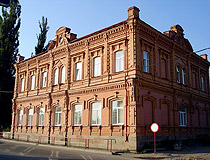
Old house in Kropyvnytskyi
Author: Ivan Grab
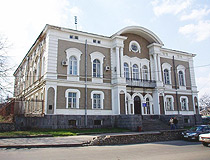
Kropyvnytskyi architecture
Author: Eugene Prudky
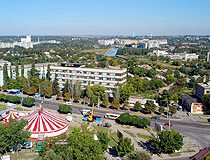
Kropyvnytskyi is a green city
Author: Demchuk I.
Kropyvnytskyi - Features
Kropyvnytskyi is named after the Ukrainian writer and playwright Marko Kropyvnytskyi (1840-1910), who created the first Ukrainian professional theater while living in this city. The City Day of Kropyvnytskyi is celebrated on the 3rd Saturday of September.
The coat of arms of Kropyvnytskyi, adopted in 1996, depicts a plan of the fortress with the monogram of St. Elisabeth, which makes it similar to its historical coat of arms of 1845. On the blue ribbon the motto of the city is written - “With peace and kindness.” Three crossed blue ribbons symbolize the Inhul, Suhokleya, and Biyanka rivers on the banks of which the city stands.
The climate of Kropyvnytskyi is determined by its location in the steppe zone. The average temperature in January is minus 4.2 degrees Celsius, in July - plus 21.1 degrees Celsius.
The leading industries of Kropyvnytskyi are mechanical engineering and the food industry. The main industrial enterprises are RPC “Radiy” (the leading enterprise for the design, development and manufacture of automated process control systems for nuclear power plants in Ukraine), JSC “Elvorti” (one of the oldest enterprises in the city, founded by English entrepreneurs the Elvorti brothers back in 1874 and producing sowing, soil-cultivating and harvesting equipment for the agro-industrial complex), JSC “Hydrosila” (hydraulic units for hydraulic systems of combines, tractors, road construction, and other mobile machines).
Highways of European significance pass through Kropyvnytskyi: Uzhhorod - Ternopil - Kropyvnytskyi - Donetsk (E 50), Slobozia - Galati - Chisinau - Kropyvnytskyi - Poltava (E 584). Public transport is represented by trolleybuses, buses and mini-buses.
In Kropyvnytskyi, a lot of the old buildings (mainly of the second half of the 19th century) have been preserved, including a number of religious buildings, the remains of Russian fortifications, Jewish quarters, etc. From the end of the 18th century, it was built up with buildings in the style of classicism (neoclassicism). At the end of the 19th - beginning of the 20th centuries, the Art Nouveau style began to dominate in its residential and public architecture.
Main Attractions of Kropyvnytskyi
Kropyvnytskyi Arboretum - a monument of gardening art, one of the most popular and beautiful places of recreation for locals and visitors of the city. In 2008, it was recognized as the best park in Ukraine. The total area of the park is 45 hectares, 33 of which are completely occupied by green spaces.
The pride of the park are more than 100 thousand tulips that bloom at the end of April. On the territory of this park there is also an entertainment area with several dozen rides and a couple of cafes and restaurants. Yevhena Telnova Street, 28.
Kropyvnytskyi Ukrainian Music and Drama Theater named after Marko Kropyvnytskyi (1865-1867) - the first professional Ukrainian theater and the main theater stage of the Kirovohrad region. The theater is located in the very center of Kropyvnytskyi, on one of the oldest and most famous streets of the city. In 2012, a lengthy reconstruction of the building was completed, which gave the theater its current appearance. Dvortsova Street, 4.
Fortress of St. Elisabeth - a unique monument of earthen fortifications of the 18th century and an open-air museum also known as just “Ramparts”. The contours of this fortress are schematically depicted on the coat of arms of Kropyvnytskyi. This construction, which laid the foundation of the future Kropyvnytskyi, was founded in 1754 and consisted of ramparts built in the form of a star-shaped polygon, the ends of which were pointed bastions. The layout of the fortress can be seen in the local history museum of Kropyvnytskyi. Ushakova Street, 1.
Kropyvnytskyi Local History Museum. Here you can find the largest collection of exhibits on the history, ethnography and culture of the Kirovohrad region. The museum occupies the House of the Merchant Barsky, an architectural monument of the late 19th - early 20th centuries, a vivid example of the early Art Nouveau style.
There are four permanent expositions: “Nature of Kirovograd Oblast”, “Weapons in the History of Humankind”, “Kirovohrad Oblast during the Second World War”, “Chernobyl”. In total, there are about 80 thousand monuments of history, archeology, ethnography, and nature from ancient times to the present including the largest collection of Scythian kurgan stelae in Ukraine. Dvortsova (Architect Pauchenko) Street, 40.
Kropyvnytskyi Regional Art Museum. The picturesque building of this museum was built at the turn of the 19th - 20th centuries by order of the merchant Israel Shpolyansky. It is a monument of architecture of the initial period of the Art Nouveau style. Its interior is of high artistic value too.
The collection includes more than 3 thousand exhibits. In total, there are five exhibition halls with three permanent exhibitions: “Sacred Art” (a collection of rare icons), “Western European and Russian Art of the 18th - early 20th centuries” (including works by artists, who lived on the territory of today’s Ukraine), “Artists - Fellow Residents” (works by artists born in the territory of the Kirovohrad region). Velika Perspektivna Street, 60.
Church of the Intercession of the Holy Mother of God - a beautiful sky-blue Orthodox church crowned with green domes. Built in the neo-Russian style in the first half of the 19th century, this is one of the most interesting works of church architecture on the territory of Ukraine. Yuriya Olefirenka Street, 14.
Cathedral of the Nativity of the Blessed Virgin Mary (1812). This monument of architecture in the neoclassical style was built by the efforts of the Greek community of the city. Therefore, the locals often call it the “Greek Church”. In Soviet times, this church was the only one that was not closed by the authorities. Here you can find icons of the 18th century and parish registers with entries from 1792. Soborna Street, 74.
Great Choral Synagogue (1895-1897) - an architectural monument built in the characteristic eclectic style of the late 19th century with some romantic Moorish elements. The building was returned to the Jewish community of Kropyvnytskyi in 1991. Today, it is the center of Jewish culture in the city and a charitable center. It also houses the museum “The Jews of Elisavetgrad”, which reflects the history of the local Jews from the 18th century to the present day. Viktor Chmilenko Street, 90/40.
“Khutir Nadia” - a state museum-reserve of the Ukrainian writer Ivan Karpenko-Karyi (Tobilevich). In 1871, his father, Konstantin Tobilevich, bought a house on a farm located on the banks of the Suhokleya River, about 25 km southwest of Kropyvnytskyi, laid out a park, planted a garden and named the farm after his wife Nadezhda (diminutively Nadia) Tarkovskaya.
In 1887, after a three-year exile, Ivan Karpenko-Karyi returned here and turned it into a creative oasis in the Ukrainian outback. Rehearsals of the first Ukrainian theater troupe under the direction of Marko Kropyvnytskyi took place here. Karpenko-Karyi created his best works here. The family’s house, the park with a pond, outbuildings, and an old well have been preserved. This is one of the most important historical and cultural sights of Ukraine. Korlyuhivka, Kirovohrad Oblast.


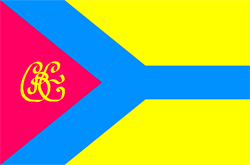
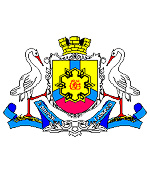



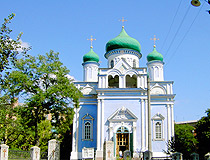
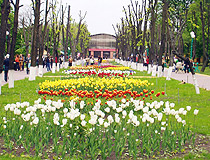
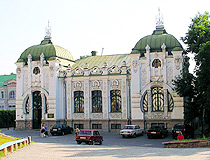
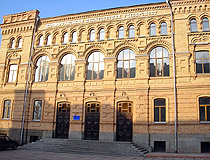
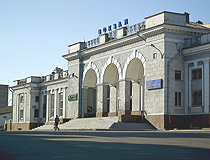
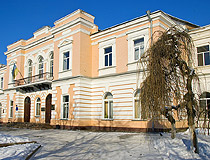
The comments of our visitors